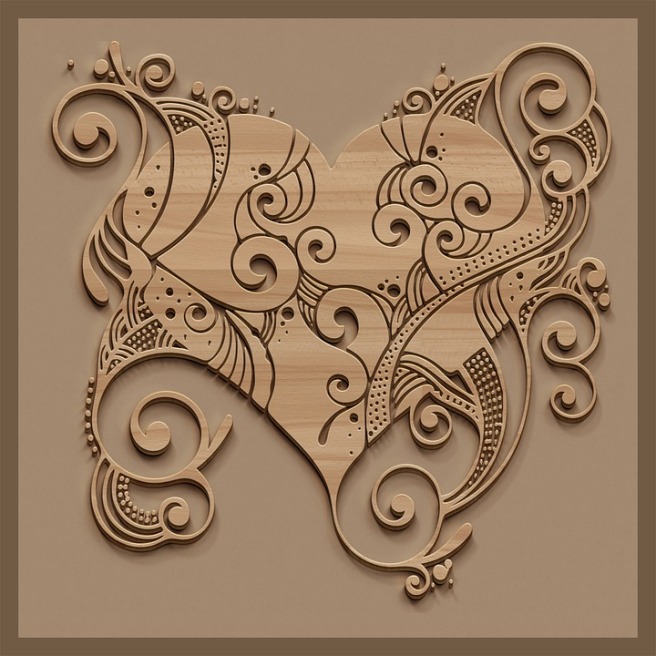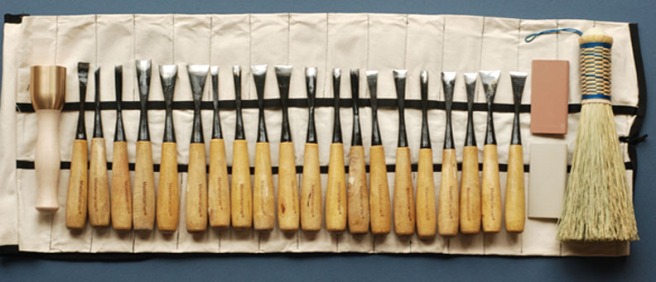Wood Carving 
What is it?
Wood carving is a type of art where they use wood and they make figure or graphic designs with specific wood tools.
Wood Carving History
Wood carving has probably been around about as long as man has been upon the earth. So the history of wood carving begins at the beginning. Man has always used and manipulated wood. Adam was probably the first wood carver. He must have used wood as one of his first tools, maybe for a club or a walking stick. He could have even tied a rock to a stick of wood and used it for a hammer. When he found a way to make an instrument sharp enough to hunt with, an arrow head or spear head may have been first but if so the knife couldn’t have been far behind. What do you think a man with a knife living in the forest or jungle who is surrounded by standing and fallen trees would do to pass his time? Woodcarving just got its beginning. Was the date recorded in a book? There probably were no books. Besides, carving was so much fun who would take the time to write it down. He probably started out whittling or maybe carved other tools or utensils out of wood. After a while he must have discovered he could carve or make just about anything he wanted out of wood. Carving could have been his favorite pastime, at least until Eve came along.
http://www.thewoodcarverscabin.com/library/history-of-wood-carving/
There’s no such thing as one type of wood…
Obviously the most important thing we need for wood carving is wood. But there isn’t just only one type of wood. There are actually many types of woods, and many are from all around the world. It also depends on how strong the wood is, sometimes the harder the wood is, the harder it will be to wood carve, but would most likely have a better outcome, and it will be more valuable. For this project I will be using Basswood most likely which is more softer wood and easier to use to wood carve. Since I’ve only wood carved for about one year and i’m not that experienced; it would be so much simpler to use.

(Different types of Woods)

The Tools
Mainly there are 3 materials we need to make a wood carving.
The wood. The gouges, chisels, v-tools, and the mallet.

(Whole Wood Carving Kit Set)
Chisels
#1 and #2 are known as chisels and they are usually to carve lines, you can pull out wood inward or outward. 
Most carving tool manufacturers use #2 to describe a skew chisel. Beveled on one or both sides like a #1, the cutting edge is skewed or angled at 60°. When it is used with a slicing motion—think of a guillotine—it easily pares wood away and fits into tight corners that a #1 can’t reach. If the bevel is on only one side, you will need a pair that comes right-handed and left-handed.

Gouges
Gouges are the most common pieces used in wood carving, they will also be the ones that I will use for my wood carving project. Gouges are shaped like spoons, they curve out and are from #3 through #11. They mainly work to scoop out the wood from the wood carving. Sometimes people use a mallet on these types since sometimes it is very hard to pull out hard wood like White Oak.

The V-Tool
In the Sheffield number system, V-tools range from #39 into the 40s. Some carvers say that the V-tool is just two chisels joined to form a V. That makes sense because the tool can perform as a chisel if held so only one cutting edge is doing the work. But the primary function of this tool is to separate areas when outlining, adding detail, texturing, or undercutting. It is also called a parting tool. The difference between the V and the gouge, even a #11, is that the V gives you a wall rather than a valley.
Since nearly all V-tools have two straight edges, measurements are based on the angles of the V. Angles are usually 30, 45, 60 and 90 degrees. Occasionally a toolmaker produces a smaller angle such as 24°, which results in a very fine line.
http://woodcarvingillustrated.com/blog/2017/04/18/all-about-chisels-gouges-and-v-tools-part-1/






